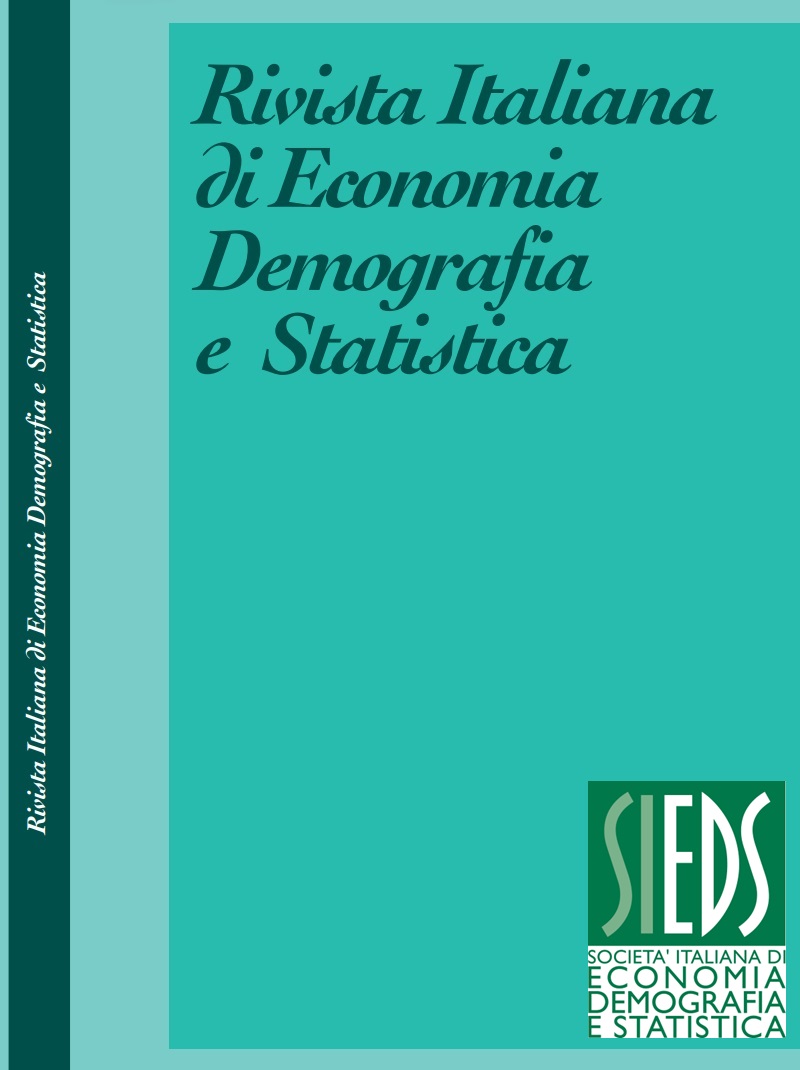Fighting gender inequalities: Istat’s experience
DOI:
https://doi.org/10.71014/sieds.v79i3.387Abstract
Istat has long demonstrated a keen sensitivity to the issue of gender equality and promoted, in a pioneering way, the conduction of surveys, studies and research aimed at a greater knowledge and dissemination of data on gender equality, useful for guiding policies to promote equality. As of 2024, the Institute has a Gender Equality Plan covering for 2024-2026 and a Gender Budget 2022. Their introduction, in the more general set of planning and reporting tools adopted by the Institute, is in accordance with the Horizon Europe strategy, which considers Gender Equality Plans a tool recognized and supported by the European Commission for gender rebalancing among the staff of research institutions and by the Fourth Conference World Conference of Women in Beijing in 1995, and later in the EU context with the European Parliament resolution of July 3, 2003, which identify the construction of public budgets according to the gender perspective as a functional action for the dissemination of greater accountability and commitment of administrations to equality. Finally, an additional tool aimed at reducing inequality should be mentioned: the Plan of Positive Actions drafted by the Comitato Unico di Garanzia which constitutes, as of the 2022 edition, an integral part of the Integrated Plan of Activities and Organization.
References
ADDABBO T., BALDASSI G., CANALI C. 2021. Gender Budgeting in Academia: a powerful tool for Gender equality. In 4th International Conference on Gender Research, Virtually Host-ed by: ACI and University of Aveiro, Portugal, 21 - 22 June 2021.
BERGER P.L. LUCKMANN T. 1966. The Social Construction of Reality: A Treatise in the Sociology of Knowledge. Garden City, NY: Doubleday.
DESROSIÈRES A. 1998. The Politics of Large Numbers: A History of Statistical Reasoning. Harvard University Press.
ELSON D. 1999. Gender-Neutral, Gender-Blind, or Gender Sensitive Budgets? Changing the Conceptual Framework to Include Women’s Empowerment and the Economy of Care, Gender Budget Initiative Background Papers, London. Commonwealth Secretariat.
EUROPEAN PARLIAMENT RESOLUTION, july 3, 2003. La costruzione dei bilanci pubblici secondo la prospettiva di genere. https://www.europarl.europa.eu/doceo/document/TA-5-2003-0323_IT.html.
EUROPEAN PARLIAMENT RESOLUTION, january 15, 2019. Valutazione delle modalità di utilizzo del bilancio dell'Unione europea per la riforma del settore pubblico. https://eur-lex.europa.eu/legal-content/IT/TXT/?uri=CELEX:11957E/TXT.
EUROPEAN PARLIAMENT RESOLUTION, january 21, 2021. Prospettiva di genere nella crisi COVID-19 e nel periodo successivo alla crisi. https://eur- ex.europa.eu/legalcontent/IT/TXT/PDF/?uri=CELEX:52021IP0024&from=EN.
EUROPEAN STRATEGY FOR GENDER EQUALITY 2020-2025, march 5, 2020. https://eur-lex.europa.eu/legal-content/IT/TXT/?uri=CELEX%3A52020DC0152
GIDDENS A. 1984. The Constitution of Society: Outline of the Theory of Structuration. Berkeley and Los Angeles: University of California Press.
GUERRA M.C., ROMANO E. 2020. Una riflessione sul bilancio di genere in Italia (A critical appraisal of the Italian gender budget report), Politica economica, Vol.36, No.2, pp.183-228.
ISTAT 2024. Piano di uguaglianza di genere 2024-2026. Roma, https://www.istat.it/wp-content/uploads/2017/03/PIANO-DI-UGUAGLIANZA-DI-GENERE-2024-2026.pdf
SHARP R., BROOMHILL R. 2002. Budgeting for equality: the australian experience, Feminist Economics. Vol.8, No.1, pp. 25-47. DOI: https://doi.org/10.1080/1354500110110029
Downloads
Published
Issue
Section
License
Copyright (c) 2025 Sara Demofonti, Simona Pace, Sabrina Pifferi

This work is licensed under a Creative Commons Attribution 4.0 International License.



